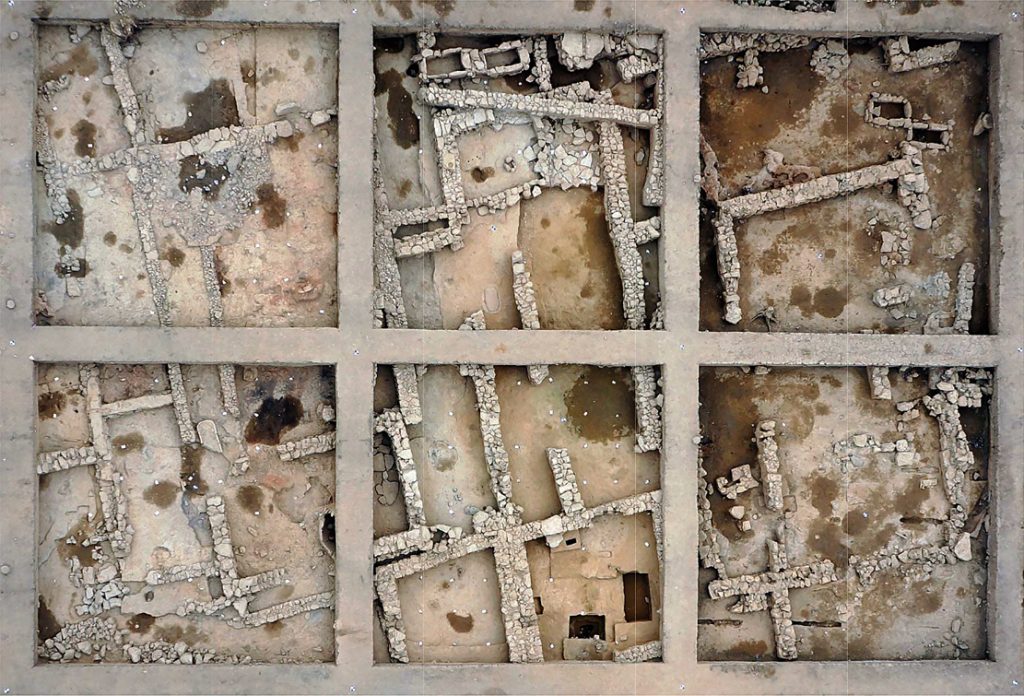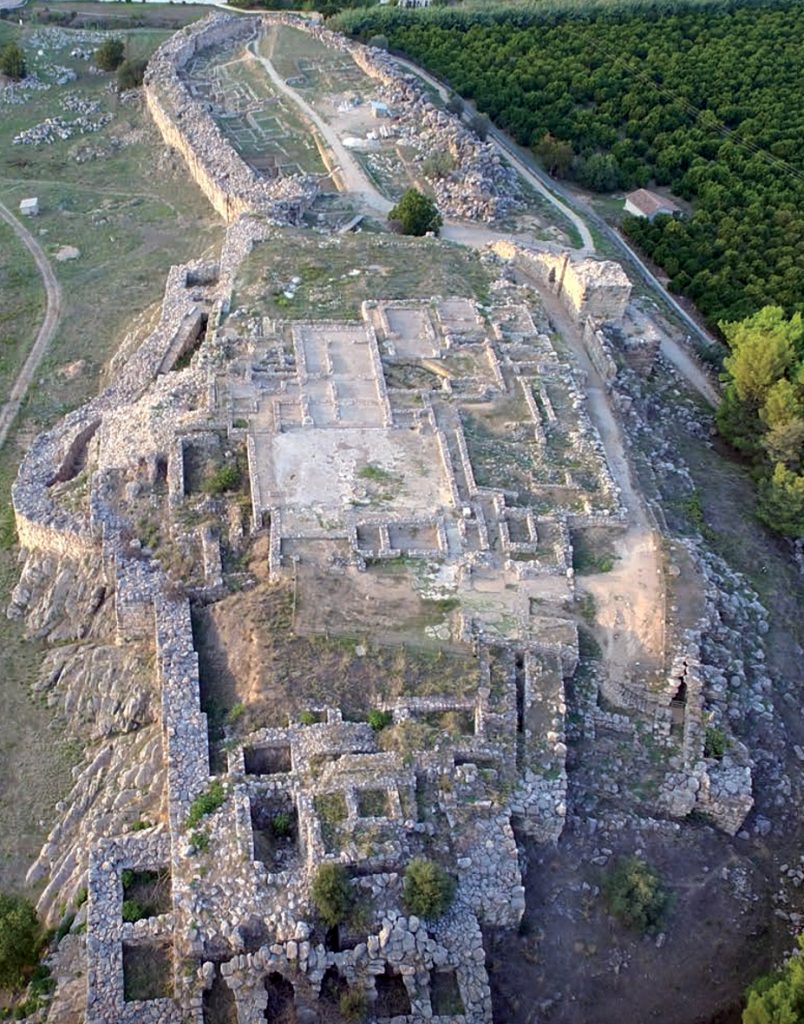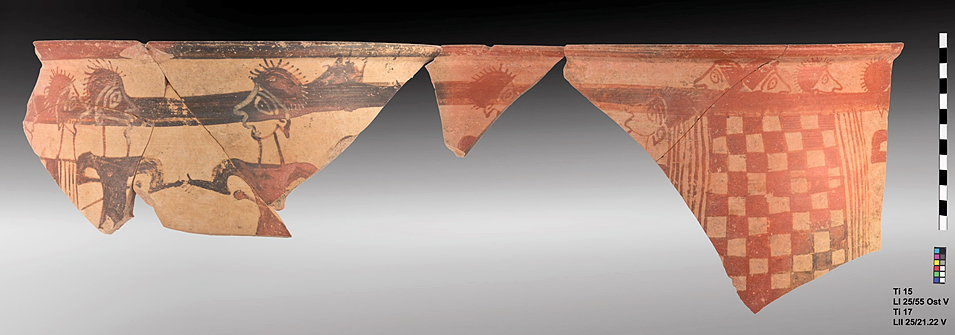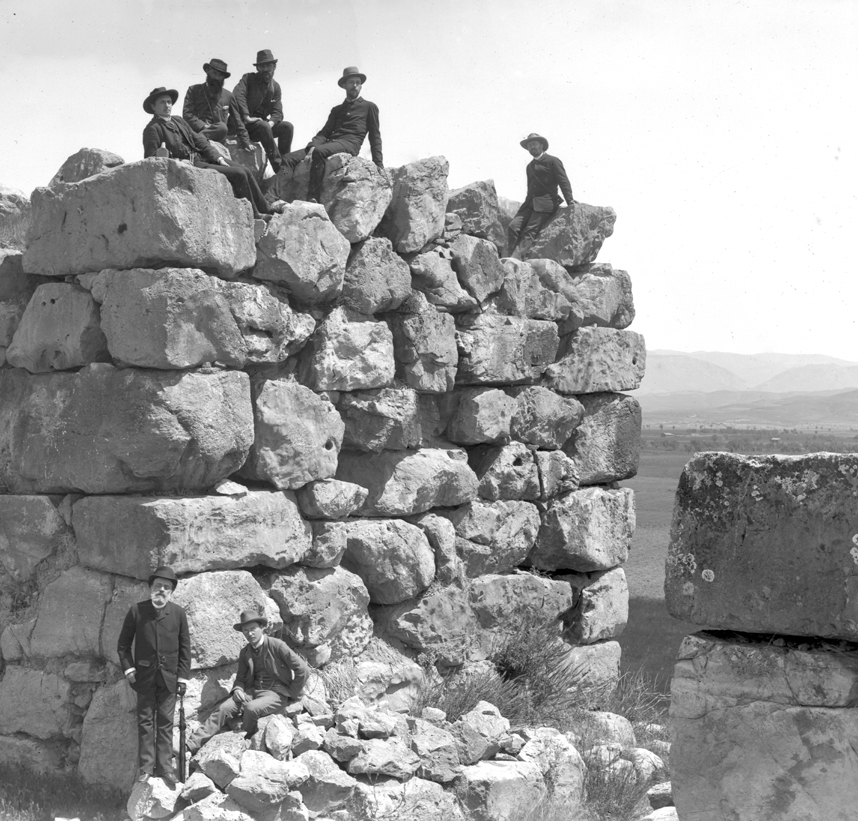In the mid 19th century, Heinrich Schliemann set off in search of the locales of Homer’s epics. At Tiryns he found one of the most important early centres of Bronze Age Europe, a focus of the development of human culture, which moreover was inscribed as World Cultural Heritage by UNESCO in 1999. Its acropolis, palace and cyclopean walls have intrigued scholars for well over 100 years.

A DAI project initiated in 2013 is investigating the north-western part of the lower city, focusing on an area that followed the period of palatial construction. This phase is considered “dark” by researchers at present, though the epithet is not at all an apt description of the settlement area that has been excavated – as large-scale, systematic building only began after the destruction of the palace. Graphic – and unique – evidence of this rapid revival of the ancient city is the “handshake krater”. We can only speculate whether the depicted handshake of two warrriors referred to an actual historical event.

Aerial view of Tiryns (Photo: K. Xenikakis, A. Papadimitriou) 
„Handschlag-Krater“ (Photo: M. Kostoula) 
Visitors on the fortification wall at the main entrance at the start of the 20th century (Photo: D-DAI-ATH-Tiryns-0007)
In cooperation with the Ephorie Nafplio (Lead by: Alkestis Papadimitriou).